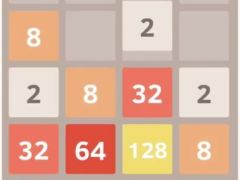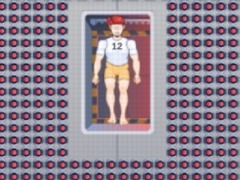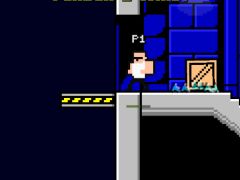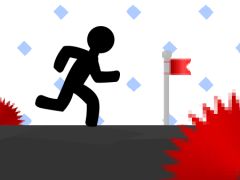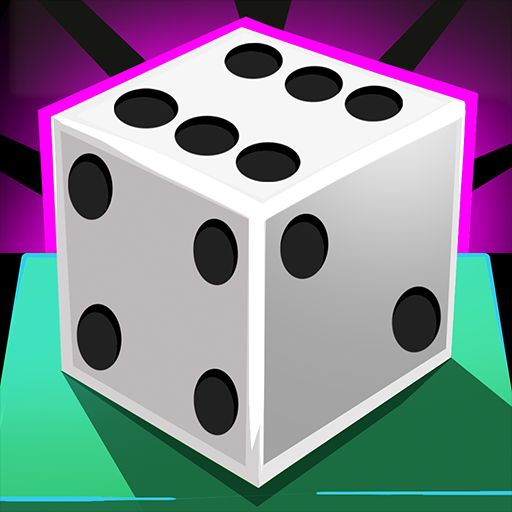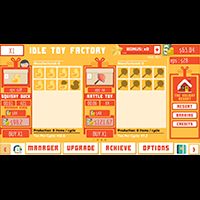SPIDER SOLITAIRE
SIMILAR GAMES
Description
Spider Solitaire - Classroom 6X
About Spider Solitaire - Classroom 6X
We are delighted to present an in-depth exploration of Spider Solitaire, a timeless card game that continues to captivate players with its blend of strategy and chance. This particular iteration, available through Classroom 6X, offers a streamlined yet engaging experience, perfect for players seeking a mental challenge or a moment of enjoyable diversion. The core of Spider Solitaire lies in its deceptively simple objective: to meticulously arrange a deck of cards into descending sequences, from the King all the way down to the Ace. This requires careful planning, strategic maneuvering, and a keen understanding of card interactions.
The game unfolds across a tableau, a grid where cards are dealt face down and face up. Players must strategically move these cards, building sequences within the columns of the tableau. A key mechanic is the ability to move any face-up card, or a sequence of face-up cards that are in correct descending order, onto another card that is one rank higher. For instance, a 7 of Hearts can be placed on an 8 of any suit. This allows for the gradual construction of the required ordered sequences.
The ultimate aim is to complete a full suit sequence, from King down to Ace, within a single tableau column. Once such a sequence is formed, it is automatically cleared from the game, bringing players closer to victory and freeing up valuable space for further moves. The satisfaction of seeing these ordered stacks removed is a significant part of the game's appeal. Mastering Spider Solitaire involves not just recognizing immediate possibilities but also anticipating the consequences of each move, looking several steps ahead to optimize the arrangement of the cards.
The element of luck is present, as the initial deal of cards can present different challenges and opportunities. However, it is the player's strategic acumen that truly determines success. Different difficulty levels, often distinguished by the number of suits used in the deck, significantly alter the strategic depth. A single-suit game is considerably easier than a two-suit game, and a four-suit game presents the ultimate test of a player's ability to manage complexity and overcome challenging card layouts. Classroom 6X ensures that these variations are accessible, allowing players to choose their preferred level of difficulty.
Beyond the immediate task of clearing cards, Spider Solitaire fosters important cognitive skills. It enhances problem-solving abilities as players decipher complex card arrangements. It sharpens strategic thinking, requiring foresight and the development of long-term plans. Furthermore, it cultivates patience and perseverance, as challenging games may demand numerous attempts and a willingness to learn from each played hand. The game provides a rewarding experience for those who enjoy engaging their minds in a structured and challenging environment.
The Fundamentals of Spider Solitaire Gameplay
At its heart, Spider Solitaire is a game of order and arrangement. The primary objective is to create sequences of cards from King down to Ace, all of the same suit. These sequences are built directly within the tableau columns. Unlike Klondike Solitaire, where foundation piles are built upwards by suit, Spider Solitaire focuses on creating these descending sequences within the main playing area.
The game typically utilizes two decks of cards, totaling 104 cards. These cards are dealt into ten tableau columns. The first four columns receive six cards each, while the remaining six columns receive five cards each. Of these cards, only the top card in each column is initially revealed face-up; the rest remain face-down, adding an element of exploration as the game progresses. This initial setup creates a dynamic and evolving playing field.
Players can move any face-up card onto another card that is one rank higher, regardless of suit. For example, a Queen can be placed on a King, a 7 on an 8, and so on. This allows for the gradual assembly of potential sequences. However, the true power of the game emerges when a player can move a sequence of cards that are already in descending order, provided they are all of the same suit. For instance, if a column has a face-up 5 of Spades on top of a face-up 6 of Spades, and the player can reveal the 6 of Spades, they can move the entire 6-5 of Spades sequence onto a 7 of any suit.
When a complete sequence from King down to Ace of the same suit is formed within a tableau column, it is automatically removed from the board. This is the ultimate goal for each suit. Clearing these sequences is crucial because it not only brings the player closer to winning but also frees up columns, making it easier to maneuver remaining cards and uncover hidden ones.
The game introduces a reserve deck, often referred to as the stock. When a player is unable to make any further advantageous moves within the tableau, they can click on the stock. This action deals one card from the stock to the top of each of the ten tableau columns. This replenishes the playing field but must be done judiciously, as it can sometimes disrupt carefully laid plans. A common strategy is to only deal from the stock when no other moves are possible, or when dealing offers a clear advantage, such as revealing a card needed to complete a sequence.
The number of suits used dictates the game's difficulty. A one-suit game typically uses only one suit (e.g., Spades), making it the easiest. A two-suit game uses two suits (e.g., Spades and Hearts), increasing the challenge significantly. A four-suit game, the most difficult, uses all four suits, demanding the highest level of strategic thinking and careful planning. Classroom 6X provides options for players to select their preferred difficulty level, making the game accessible to both beginners and seasoned enthusiasts.
Strategic Depth in Spider Solitaire
While the rules of Spider Solitaire are straightforward, the strategic depth is immense. Effective play hinges on a combination of foresight, tactical decision-making, and adaptability. The goal is not merely to move cards but to move them in a way that facilitates the eventual formation of complete suit sequences.
Prioritizing Sequences
The most critical strategic principle is to prioritize building sequences of the same suit. Moving a 7 of Spades onto an 8 of Hearts might seem like a valid move, but if that 7 of Spades is crucial for building a sequence that could lead to clearing a column, it might be better to hold onto it. Players should constantly be on the lookout for opportunities to place cards in a way that extends an existing sequence of the same suit, or to create a position where such an extension becomes possible.
Uncovering Hidden Cards
A significant part of the game involves revealing the face-down cards. Every time a card is moved from one column to another, or a sequence is moved, the face-down card beneath it is revealed. These revealed cards can dramatically change the possibilities on the board. Therefore, players should actively seek moves that uncover new cards, especially when those uncovered cards might be useful for building sequences or freeing up other cards. Empty tableau columns are also highly valuable assets.
The Value of Empty Columns
An empty tableau column is a powerful resource. It can accommodate any card, allowing players to temporarily store cards that are blocking other moves or to begin building a new sequence from scratch. Expert players often aim to create empty columns strategically by clearing full suit sequences. This provides flexibility and a safe haven for cards that would otherwise be difficult to place. Care must be taken, however, not to deplete the board too quickly without a plan, as this can leave players with few options.
Deciding When to Deal from the Stock
The decision of when to deal from the stock is a strategic one. As mentioned, dealing too early can disrupt the board. However, waiting too long might lead to a situation where no moves are possible. A good rule of thumb is to deal only when there are no other advantageous moves available, or when a specific card from the stock is clearly needed. Some players prefer to deal when they have a reasonable number of empty columns to absorb the incoming cards, minimizing the risk of overwhelming the tableau.
Managing Difficulty Levels
For beginners, starting with a one-suit game is highly recommended. This allows players to familiarize themselves with the basic mechanics of moving cards, building sequences, and clearing columns without the added complexity of managing multiple suits. As proficiency grows, transitioning to two-suit and then four-suit games provides a progressive challenge. The four-suit game is where true mastery of Spider Solitaire is tested, requiring intricate planning and a deep understanding of probability.
Patience and Observation
Spider Solitaire is not a game to be rushed. Taking the time to observe the entire tableau, identify potential sequences, and consider the long-term implications of each move is crucial. Sometimes, the best move is not the most obvious one, but rather a series of seemingly minor moves that open up significant strategic opportunities later in the game. Patience allows players to avoid costly mistakes and to capitalize on subtle advantages.
Understanding the Different Spider Solitaire Variations
The beauty of Spider Solitaire lies in its adaptability, primarily through the number of suits used. Classroom 6X offers these variations, allowing players to tailor the experience to their skill level and preference for challenge.
One-Suit Spider Solitaire
This is the simplest and most accessible version of Spider Solitaire. It uses only one suit, typically Spades. The objective is to arrange all the cards into descending sequences of Spades from King down to Ace. Because there is only one suit to manage, the game is less complex. Players can focus on the fundamental mechanics of building sequences and clearing columns without the added mental overhead of tracking multiple suits. This version is excellent for newcomers to the game or for those seeking a relaxing yet mentally stimulating diversion. The probability of winning is significantly higher in a one-suit game, making it a rewarding starting point.
Two-Suit Spider Solitaire
Stepping up in difficulty, the two-suit game introduces a greater level of complexity. This variation uses two suits, commonly Spades and Hearts. Players must now create descending sequences of each suit independently. For example, a sequence of Spades must be built with only Spades, and a sequence of Hearts with only Hearts. This means that a Queen of Spades can only be placed on a King of Spades, and a 7 of Hearts can only be placed on an 8 of Hearts. The presence of two suits means that cards of different suits that are one rank apart can still be moved onto each other (e.g., a 7 of Spades can be moved onto an 8 of Hearts), but this move does not extend a suit sequence. The strategic challenge increases considerably as players must juggle the needs of two distinct suits and ensure that moves made to progress one suit do not inadvertently hinder progress on the other.
Four-Suit Spider Solitaire
The ultimate test of Spider Solitaire prowess is the four-suit game. This version utilizes all four suits: Spades, Hearts, Diamonds, and Clubs. The goal remains the same: to create complete descending sequences from King to Ace for each suit. However, the complexity is amplified exponentially. Players must manage the arrangement and progression of four separate suits simultaneously. Strategic planning becomes paramount, as a single misplaced card or a poorly considered move can have cascading negative effects across the entire tableau. This variation demands a high degree of foresight, patience, and a sophisticated understanding of card interactions. It is the version that most seasoned Spider Solitaire players aspire to master.
Regardless of the chosen variation, the core gameplay remains consistent: careful card placement, strategic clearing of sequences, and judicious use of the stock. Classroom 6X provides a consistent and enjoyable platform for players to explore and master all these facets of Spider Solitaire.
Why Play Spider Solitaire on Classroom 6X?
Classroom 6X offers a superior platform for enjoying Spider Solitaire, combining accessibility with a focus on the pure gameplay experience. We have designed this version with the player in mind, ensuring a smooth and intuitive interface that allows you to concentrate on the strategy of the game.
Our implementation of Spider Solitaire prioritizes clarity and ease of use. The cards are well-defined, the tableau is spacious, and the controls are responsive. This means you can focus on your strategic decisions without being hampered by a cluttered or confusing interface. Whether you are a seasoned player familiar with the nuances of the game or a complete beginner, you will find our platform easy to navigate and enjoyable to play.
The ability to select different difficulty levels, corresponding to the one-suit, two-suit, and four-suit variations, is a key feature. This allows players to progress at their own pace, starting with simpler challenges and gradually increasing the complexity as their skills develop. This tiered approach ensures that Spider Solitaire remains engaging and rewarding for players of all experience levels.
Furthermore, Classroom 6X provides a stable and reliable gaming environment. You can enjoy uninterrupted gameplay, focusing on the mental challenge that Spider Solitaire presents. The game is designed to be a focused experience, free from unnecessary distractions, allowing for deep concentration and strategic planning.
We understand that the appeal of Spider Solitaire lies in its blend of chance and strategy, and our platform aims to enhance this experience. By offering a clean, well-designed interface and a faithful representation of the game's mechanics, Classroom 6X provides an ideal setting for honing your skills, improving your strategic thinking, and enjoying countless hours of this classic card game.
The Cognitive Benefits of Playing Spider Solitaire
Engaging with Spider Solitaire offers more than just entertainment; it provides a wealth of cognitive benefits that can positively impact mental acuity and problem-solving skills. The game is a subtle yet effective workout for the brain, encouraging the development of several key mental faculties.
Enhanced Problem-Solving Skills
At its core, Spider Solitaire is a complex puzzle. Players are presented with a seemingly random arrangement of cards and must devise a systematic approach to bring order to chaos. This requires identifying patterns, anticipating consequences, and devising multi-step solutions. Each game presents a unique problem, and finding the optimal path to victory hones a player's ability to break down complex challenges into manageable steps.
Improved Strategic Planning and Foresight
The game demands more than just reacting to the current state of the board. Players must think ahead, visualizing how their moves will impact future possibilities. Deciding which card to move, which sequence to build, and when to deal from the stock are all strategic decisions that require foresight. This continuous process of planning and replanning strengthens a player's ability to think strategically in various contexts, both within and outside the game.
Increased Focus and Concentration
Successfully navigating a challenging game of Spider Solitaire requires sustained attention. Players must monitor multiple tableau columns, keep track of potential sequences, and be aware of the cards in the stock. This sustained focus helps to build concentration skills, which can be invaluable in academic, professional, and everyday tasks. The game trains the mind to resist distractions and remain focused on the objective.
Development of Patience and Perseverance
Not every game of Spider Solitaire will be an easy victory. Often, players will encounter difficult layouts that require numerous moves and careful strategy to overcome. The process of working through these challenging games fosters patience and perseverance. Players learn to persist even when faced with setbacks, understanding that a solution may be within reach with continued effort and a thoughtful approach. This resilience is a valuable trait that extends beyond the gaming table.
Memory Enhancement
While not a memory-intensive game in the traditional sense, Spider Solitaire does require players to remember the locations of certain cards or the potential of uncovered cards. As players become more experienced, they develop an intuitive understanding of the game's dynamics, which indirectly strengthens their working memory and ability to hold multiple pieces of information in mind simultaneously.
By providing a mentally stimulating environment, Spider Solitaire, particularly as offered through Classroom 6X, serves as an excellent tool for cognitive development. It offers a fun and engaging way to sharpen essential mental skills, making it a worthwhile pursuit for players of all ages.
Spider Solitaire, a classic card game, challenges players to arrange a deck of cards in order using minimal moves. The objective is to create descending sequences from King to Ace within the tableau columns. Once a sequence is completed, it is automatically removed from the tableau, the goal being to clear all cards. The game is renowned for its ability to combine both luck and strategy, giving players the chance to plan their moves ahead and adapt their strategy based on the situation of the cards.
Refine Skills with Varied Difficulties
Spider Solitaire offers varying levels of difficulty by providing one, two, or four suits to play with, which adjusts the complexity and strategy required to win. Beginners might start with the one-suit game to grasp the basic mechanics, while more experienced players can challenge themselves with the four-suit version, which requires more strategic planning and foresight. This versatility makes Spider Solitaire an enduring favorite among solitaire games, appealing to both casual players looking for a relaxing pastime and more competitive players seeking a mental exercise.
